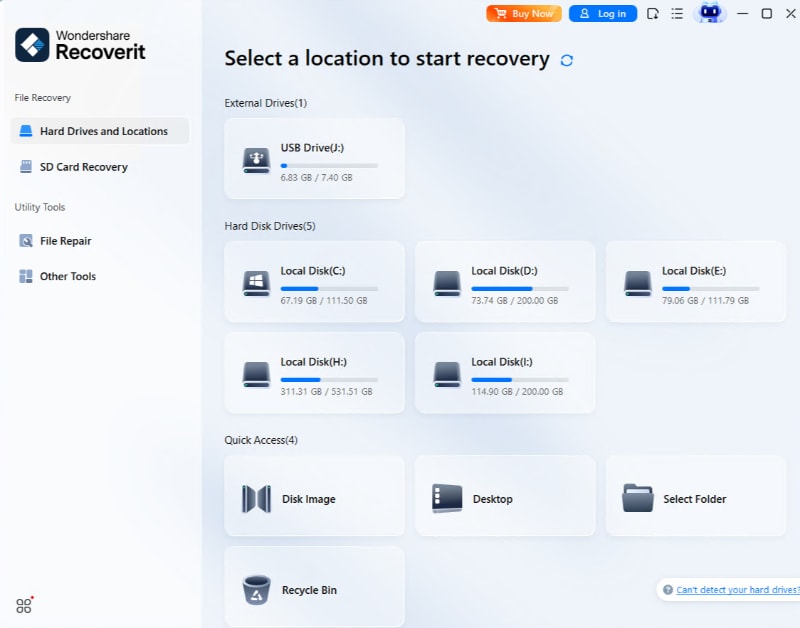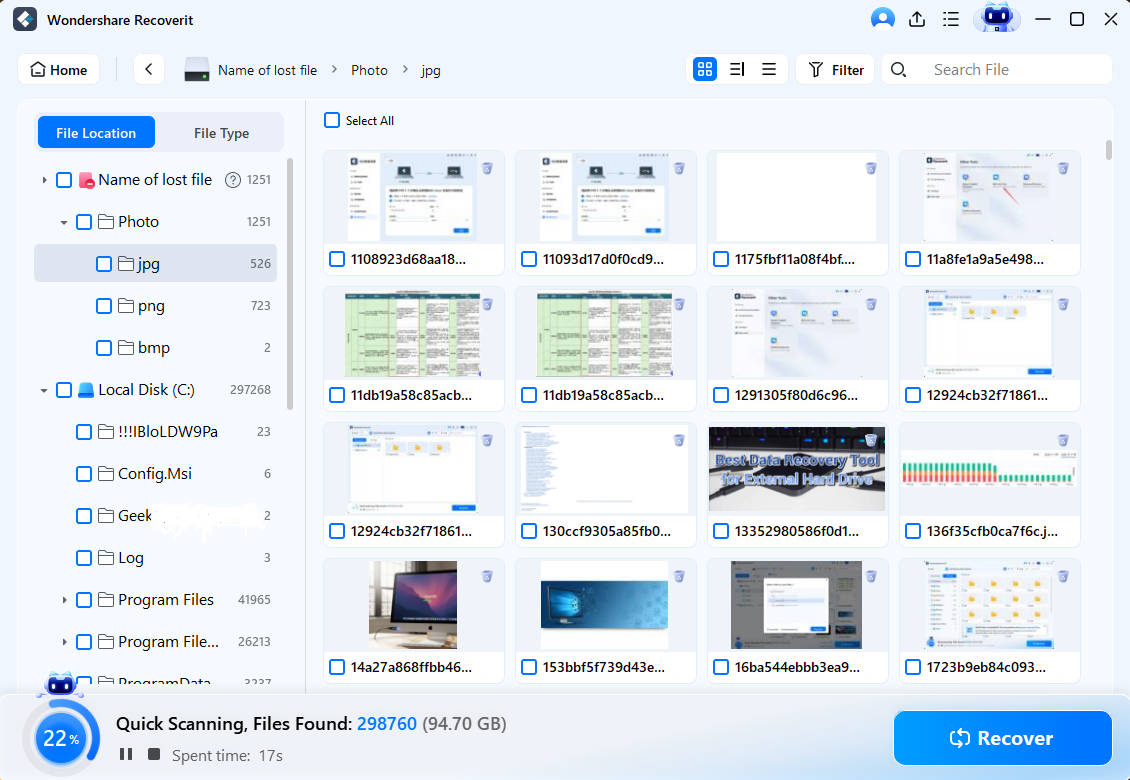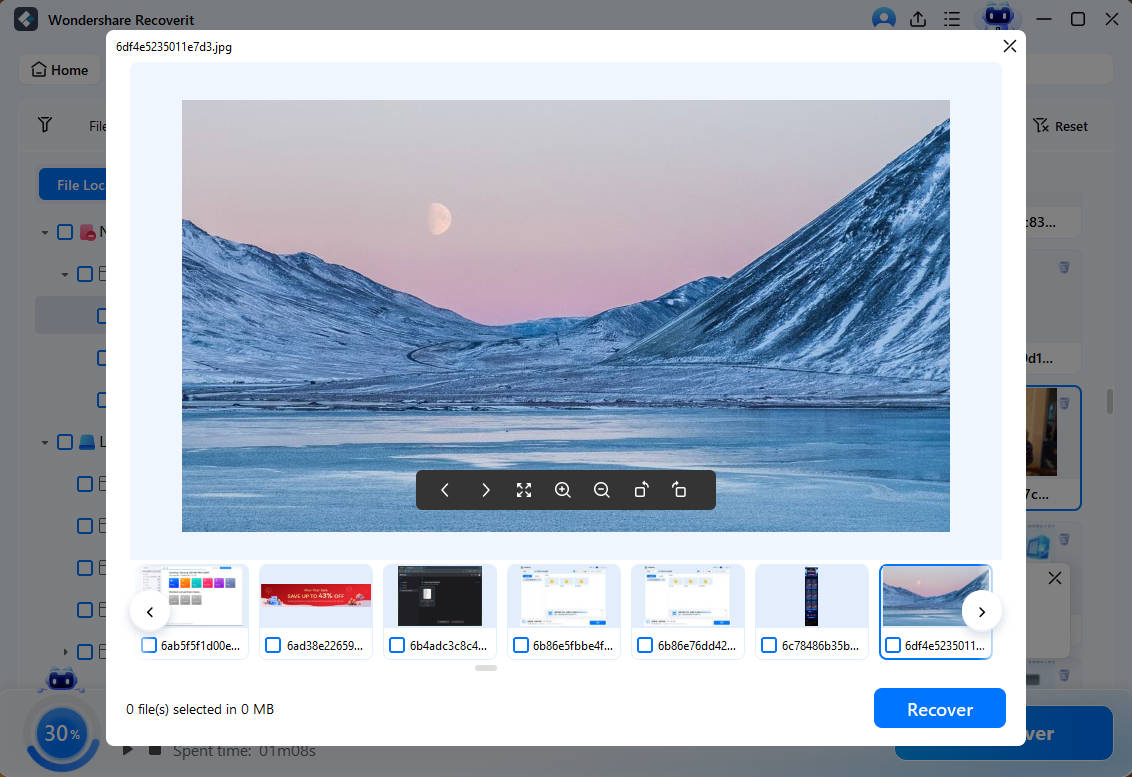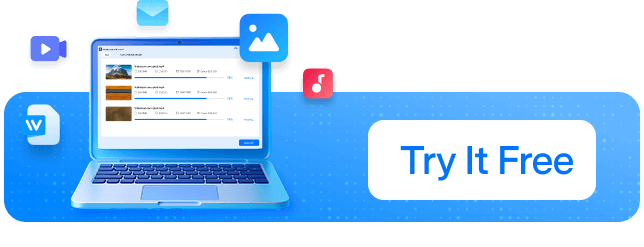Having a locked folder in Google Photos helps keep your private photos safe. But what if you forget the password? Ever had an thought about, "How can I recover my locked folder photos?" Or you may need to recover a locked folder for other reasons. This guide will show you how to recover locked folder Google Photos.
It can be challenging to recover a locked folder in Google Photos. There are steps you can take, though. This article includes multiple solutions and tips to help you recover locked folder Google Photos. We will also discuss a tool called Wondershare Recoverit.
It is essential to follow the steps carefully to ensure you successfully recover your locked folder in Google Photos. This article will walk you through various solutions for how to recover locked folder Google Photos.
Try Wondershare Recoverit to Perform Locked Folder Recovery

In this article
Part 1: Why Lock Google Photos?
Locking your Google Photos can be very beneficial for several reasons. Here are some key points:
- Protects Private Photos: Ensures your most personal moments stay personal.
- Keeps Personal Moments Safe: Adds an additional barrier to safeguard cherished memories.
- Prevents Unauthorized Access: Stops others from viewing sensitive images.
- Adds an Extra Layer of Security: Enhances the overall security of your photo library.
- Useful for Hiding Sensitive Images: Keeps certain photos out of sight when sharing your device.
- Helps in Organizing Photos: Maintains order by securing specific albums.
- Protects Against Accidental Deletion: Prevents the accidental deletion of important photos.
- Ensures Privacy on Shared Devices: Maintains privacy if you share your device with others.
Part 2: Recover Locked Folder in Google Photos: Simple Fixes
Recovering a locked folder in Google Photos can be challenging, but it's achievable. Sometimes, the issue is as simple as a poor internet connection or an account mix-up. In other cases, you may need to use recovery tools or seek help from Google Support.
Let's explore these solutions in detail.
Solution 1: Check Your Wi-Fi Connection
A stable internet connection is essential for accessing Google Photos. If your Wi-Fi connection is unstable or weak, you may have trouble accessing your locked folder. It's important to ensure that your Wi-Fi is working correctly before trying other solutions.
First, verify if other devices can connect to the Wi-Fi. If they can, the problem might be with your device. Restarting your router often resolves connectivity issues. Here's how to proceed:
Steps:
- Check if your device is connected to the Wi-Fi. Restart your router and modem.

- Reconnect your device to the Wi-Fi. Try accessing your locked folder in Google Photos again.
Solution 2: Check Your Google Account
Sometimes, the issue might stem from your Google account. If you're not signed into the correct account, you may be unable to access your locked folder. Verifying and ensuring you're signed into the right account can help resolve this problem.
Make sure that you are signed in with the correct Google account associated with your Google Photos. Signing out and back in might solve the problem. Here's what to do:
Steps:
- Open your Google Photos app. Tap on your profile picture icon. Check the account details and sign out.

- Sign back in with the correct account. Try accessing your locked folder again.
Solution 3: Use an App to Recover Deleted Locked Photos from Android
If you've accidentally deleted photos from your locked folder, recovery tools can help retrieve them. There are several trusted tools available that can assist in recovering deleted photos from an Android device.
Using these recovery tools can be an easy way to recover your lost photos. Make sure to select a reliable tool and follow the instructions carefully. Here's how you can do it:
Steps:
- Head to Play Store. Download and install Deleted Photo Recovery app. Launch the app and select the recovery option. The app will scan your device.

- Preview the photos that can be recovered and choose the ones you want to restore. Follow the on-screen steps to finish the recovery process.
Solution 4: Seek Help From Google Support
If you are unable to recover your locked folder by yourself, seeking help from Google Support can be a good option. The support team can provide you with detailed guidance and assistance in recovering your photos. They have access to more advanced tools and information.
Reaching out to Google Support can help you resolve complex issues that other solutions may not cover. Here's how to contact them:
Steps:
- Visit the Google Support website. Search for "Google Photos locked folder recovery". Follow the instructions.

- Explain your issue in detail to the support team. Follow the steps.
Solution 5: Turn Off Third-Party Extensions
Third-party extensions can sometimes interfere with the functioning of Google Photos. Disabling these extensions can help resolve access issues. Extensions might affect the app's performance or block certain features, including the locked folder.
Turning off these extensions temporarily can help you identify if they are causing the issue. Here's how to do it:
Here’s how to recover Google Photos locked folder:
- Open your browser. Navigate to extensions page. Disable any third-party extensions you are using. Restart your browser.

- Try accessing your locked folder in Google Photos again. If it works, consider removing or updating the problematic extension.
These methods provide a comprehensive approach to recovering a locked folder in Google Photos. By following these steps, you can ensure that your photos are accessible and secure.
Part 3: Bonus Tip: Wondershare Recoverit: A Solution for Data Recovery!
Wondershare Recoverit is a powerful tool for data recovery. It can help you recover photos from locked folders in Google Photos. Whether you have accidentally deleted your photos or encountered a technical issue, Wondershare Recoverit offers a reliable solution to retrieve your lost data. It is compatible with various devices and supports a wide range of file formats, making it a versatile choice for data recovery needs.
This tool stands out for its user-friendly interface and effectiveness. Even if you are not tech-savvy, you can easily navigate through the recovery process.
With a high recovery rate and secure methods, Wondershare Recoverit ensures that your precious memories are safe and retrievable. It's an excellent option for those looking to recover their locked folder photos effortlessly.
Key Features:
- Supports multiple file types
- Easy-to-use interface
- High recovery rate
- Available for both Windows and Mac
- Secure and reliable
Here’s how to recover Google locked folder photos using Recoverit:
- Download and install Wondershare Recoverit. Launch the program and select the recovery option. Choose the location where your photos are stored. Click Start to scan for lost photos.

- Wait for the scanning process.

- Preview the recoverable files and select the ones you need. Click Recover to save the files to your device.

Part 4: How to Perform Locked Folder Backup
Regular backups are essential to ensure the safety of your photos. Google Photos offers a built-in backup feature that you can easily enable to protect your locked folder content. This way, if anything happens to your device, you can restore your photos from the backup.
To perform a backup of your locked folder, follow these steps:
- Open Google Photos on your device. Go to the settings menu. Find the Backup & Sync option and turn it on.

- Ensure your Google account is selected. Check if the backup settings meet your requirements, such as selecting folders to back up.
Additionally, third-party backup tools can offer more features and customization options. These tools can help you perform scheduled backups, store your data in the cloud, and provide extra security measures. Choose a reliable third-party tool and follow the instructions to back up your locked folder.
Regularly backing up your locked folder ensures that your photos are safe and can be easily restored if needed. It's a good practice to have multiple backup solutions to minimize the risk of data loss.
Conclusion
Recovering a locked folder in Google Photos might seem hard, but it is possible. Start by checking your internet connection and verifying your Google account. Use recovery tools or ask Google Support for help. Each method offers a way to access your photos, so follow them until you succeed.
If basic solutions do not work, Wondershare Recoverit is a great tool for recovering lost photos. It is user-friendly and effective. You can also contact Google Support for detailed assistance. They can provide expert help to recover your locked folder.
Always back up your photos regularly. Use Google Photos' built-in backup feature or third-party tools. Regular backups protect your photos and keep your memories safe. By following these tips, you can handle any issues with your locked folder in Google Photos.
FAQs
-
Is the Google Photos locked folder backed up?
The Google Photos locked folder is not backed up. This folder stores photos locally on your device, adding an extra layer of security by keeping them off cloud storage. If you lose your device or reset it, you might lose these locked photos because they are not included in the automatic backup process. -
How to recover deleted locked files?
To recover deleted locked files, you can use data recovery tools designed for Android or contact Google Support for assistance. Tools like Wondershare Recoverit can scan your device for deleted files and help restore them. It's crucial to act quickly, as the likelihood of recovery diminishes over time. -
How to recover deleted hidden photos?
Recovering deleted hidden photos can be achieved using data recovery software. These tools can scan your device for hidden and deleted photos, allowing you to restore them. Wondershare Recoverit is a reliable option, offering a user-friendly interface and high recovery success rates. -
Where do Google locked photos go?
Google locked photos are stored locally on your device within a secure, encrypted folder. They are not uploaded to the cloud, ensuring that they remain private and only accessible on the device they were locked on. This local storage method provides added security but also means they are vulnerable to device loss or failure.




 ChatGPT
ChatGPT
 Perplexity
Perplexity
 Google AI Mode
Google AI Mode
 Grok
Grok























